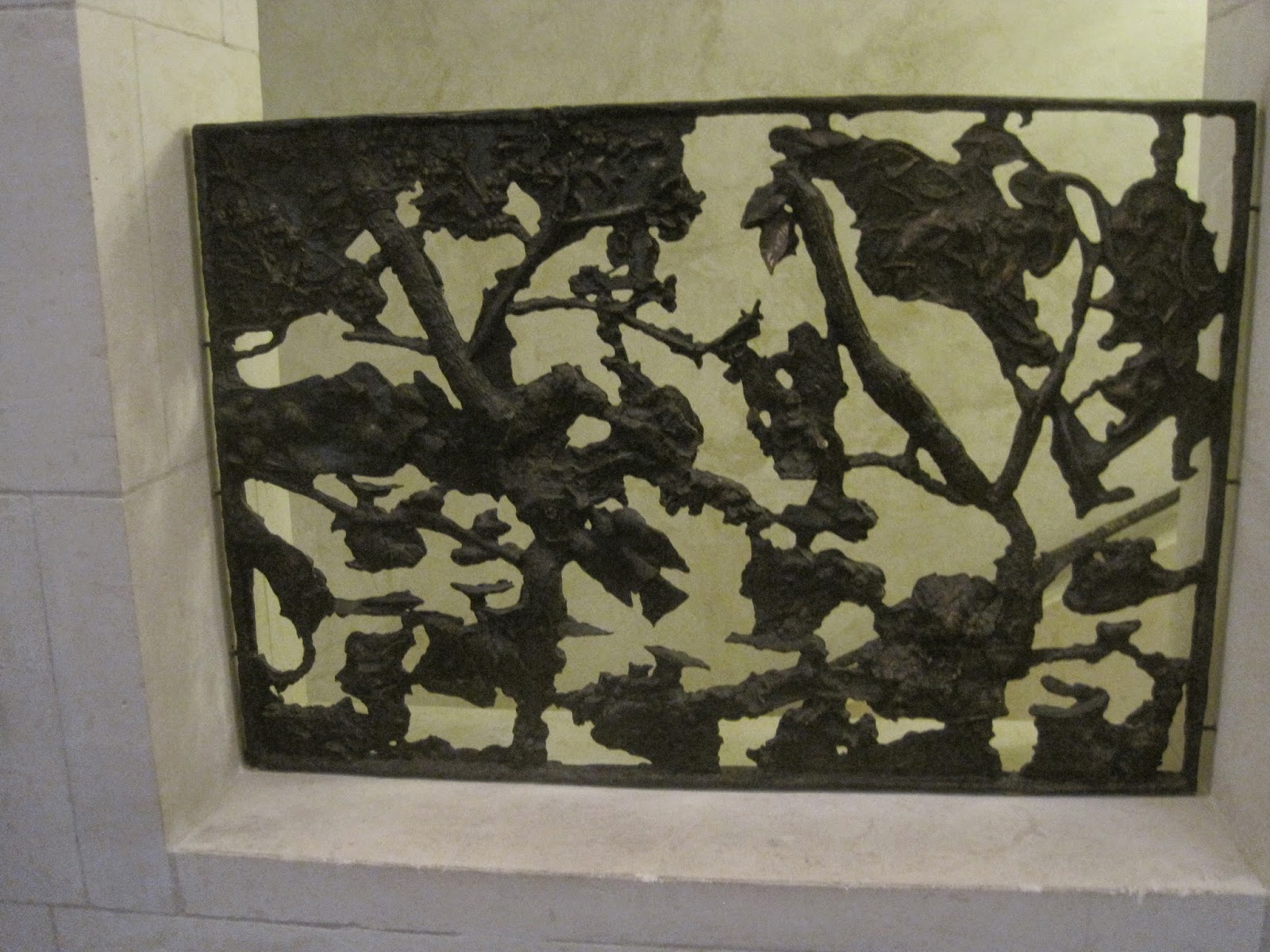If someone had told me before my last trip to Paris that the Museum of hunting and nature would be among the most fascinating I had ever visited in this city of museums, let alone anywhere, I would have laughed in their face. Boy was I wrong.
I visited for the architecture of course but was floored by the collections. Housed primarily in the famous Hotel de Guenegaud by Mansart, the museum added on another fascinating structure in 2007 to expand their collection, the Hotel de Mongelas.
Above is the courtyard of the Hotel Guenegaud, designed and built by Francois Mansart (father of the Mansard roof) between 1651 and 1655 in the heart of the ancient Marais district.Much of the Hotel Guenegaud is sadly closed to the public however. The neighboring Hotel de Mongelas, which was extensively renovated and restored during the 2007 addition of the space to the museum, more than makes up for this closure.
The entrance into the museum is through the courtyard of the Mongelas which mixes the best of the old (built in the early 17th century although largely altered, possibly also by Mansart) with the best of the modern -much like the collection itself.
Like in much restrained Neoclassicim, the only ornament lies in the pediment which is highly sculptural.
I love this shade of blue which contrasts so nicely with the limestone.
The entry to the street features this pleasant face in the keystone.
Each room fronts onto the courtyard, much like a donut, with the primary rooms also facing the street with windows on 2 sides.
The old if not original bronze window hardware is lovely, but more on that later.
The tile floors and this iron railed staircase date from the time of Louis XIV.
The collections are all over the map; dealing with animals and nature however loosely.One could wander through these lovely rooms all day. Unlike many other museums in this city there are no crowds.
The rooms in the Hotel Guenegaud which are open to the public, on the 2nd level, were among the prettiest in the museum.
I love these marble floors and these chairs, featuring embroidered hunting scenes, are fabulous.
I've been looking for LED picture lights just like this, I should have asked where they were from!
No detail was overlooked -notice the trim on these curtains and those tiebacks!
Different contemporary artists exhibit works throughout the museum, mixed in with the collections. This artist had beautifully detailed works made of animal feathers scattered throughout the museum. Sadly I never caught their name.
This lacquered chinoiserie desk, the envy of most people reading this blog I'm sure (myself included), features a hunting scene as well as hoofed legs.
Naturally (pun intended) there was plenty of taxidermy and other grisly animal carcasses to explore.
This witty artist had made cans that featured endangered species, ala Warhol.
I loved this portrait of the Princess Beatriz de Borbon y Torlonia on her horse -one of many equestrian portraits.
One thing missing from the museum, which you could add to your own collection, is this amazing Porcelain Doll Head Cup with saucer at thestore.com. I like the black color best.
Notice anything about this electrified silver candelabra? The base is of a stag hunt, with grisly dogs.
One of many contemporary exhibits was this bird car by Vincent Dubourg from 2006.
However the main 'exhibit' which impressed me the most was actually built into the building in the 2007 renovation. The artist Saint Clair Cemin produced all of the metal hardware (railings, door knobs, light fixtures, etc) which are to be found throughout the Hotel de Mongelas.
These wonderful bronze fittings were incredibly detailed -featuring textures such as bone or feathers which connect the building to the base of the collection.
Notice how the bronze door handles have a living finish and change (are polished) where handled daily by visitors.
There must have been 100 of these lovely sconces lining the stairhall, each a work of art.
Notice again the living finish of the bronze -the way the detail gets polished over time as people rub against the railing .
The end of the handrail is most striking.
These panels at the top of the main stair double as guardrails.
This museum more than any other I've noticed goes to show that details matter: not just in the collection but in the building as a whole! On your next trip to Paris be sure to check out this gem, the Musee de la Chasse et de la Nature in the heart of the historic Marais.







































No comments:
Post a Comment